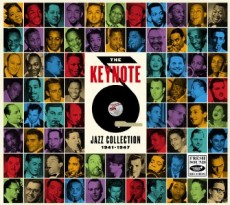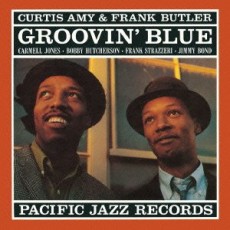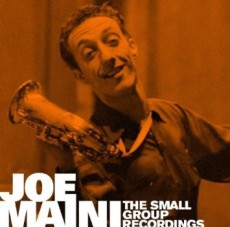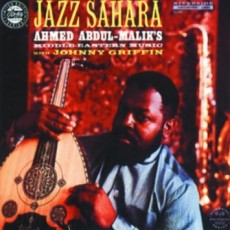
Daily Dose Of Jazz…
Harry Lim was born on February 23, 1919 in Batavia, Jakarta, Indonesia. He grew up in the Netherlands where he became very fond of jazz, moving to the U.S. in 1939. After working as a freelance record producer, he was the Keystone label’s jazz producer from 1943-46, putting together scores of classic sessions. His emphasis was on small-group jazz that ranged from Dixieland to bop but mostly focused on top swing all-stars.
Although he was a lifelong fan of jazz, he was primarily active in jazz during two different periods. The quality of the music under Harry’s guidance was very high but unfortunately, however, in 1946 John Hammond replaced him and Keynote subsequently declined and became defunct. Lim had his own short-lived HL label in 1949, produced a few obscure sessions for Seeco, and tried reviving Keynote in 1955, but ended up working at Sam Goody’s New York record store from 1956-73.
During his years at Keystone he was able to produce sessions by Count Basie, Roy Eldridge, Cozy Cole, Barney Bigard, George Barnes, Paul Gonsalves, Bud Freeman, Ann Hathaway, Coleman Hawkins, J.C. Heard, Neal Hefti, Earl Hines, Milt Hinton, Chubby Jackson, Ted Nash, Jonah Jones, Paul Robeson, Red Rodney, Charlie Shavers, Wilie Smith, Rex Stewart, Juan Tizol, Dinah Washington, Lennie Tristano, George Wetting, Lester Young, and the list just goes on.
Harry didn’t return to producing until 1972 when he formed the Famous Door label, a top mainstream record company that recorded a variety of valuable and now hard-to-find sessions with Bill Watrous, Red Norvo, Zoot Sims, and others up until his death.
Record producer Harry Lim passed away on July 27, 1990 in New York City. He was most active on the jazz scene between 1940s to through the 1950s, and happily was still living when Polygram reissued all of the Keynote jazz sessions on a huge LP box set in 1986.
More Posts: record producer

Daily Dose Of Jazz…
Frank Butler was born on February 18, 1928 in Kansas City, Missouri. A drummer from childhood he later moved west, becoming associated in large way with the West Coast school.
Never becoming well known or publicly popular Butler was highly regarded by fellow musicians. He performed and recorded with Duke Ellington, Dave Brubeck, John Coltrane and Art Pepper in the decades of the Fifties and Sixties.
In the mid-to-late 1950s, he was a member of the Curtis Counce Quintet and recorded with Joyce Collins, Ben Webster, Hampton Hawes, Elmo Hope, Fred Katz and Harold Land. By the Sixties he was co-leading a group with Curtis Amy, and recording with Phineas Newborn, Miles Davis on Seven Steps To Heaven.
However, sidelined for many years by his heroin addiction, he did not record an album under his own name until the 1970s. During this period he also recorded with Dolo Coker, Kenny Drew and Teddy Edwards. Drummer Frank Butler passed away on July 24, 1984 in Ventura, California at the age of 56.
More Posts: drums

Daily Dose Of Jazz…
Joe Maini was born on February 8, 1930 in Providence, Rhode Island. Early in his career he played alto saxophone in the big bands of Alvino Rey, Johnny Bothwell and Claude Thornhill. He moved to Los Angeles, California and found work as a session musician and continued working in big bands, usually holding the lead alto chair.
Some of the leaders Joe worked with over the course of his career were Terry Gibbs, Onzy Matthews, Gerald Wilson, Bill Holman, Louis Bellson, Jack Montrose, Dan Terry, Johnny Mandel and Shelly Manne. He recorded in small group settings with Clifford Brown and Max Roach, Zoot Sims, Jack Sheldon, Red Mitchell, Lin Halliday, Kenny Drew and Jimmy Knepper. He also worked with his close friend, comedian Lenny Bruce.
Alto saxophonist Joe Maini passed away at age 34 in Los Angeles on May 7, 1964. History states it was while playing Russian roulette as the cause, but family and witnesses contend it was simply a firearms accident. Forty-four years after his death, Lone Hill Jazz issued a four-CD set with many of his small group recordings.
More Posts: saxophone

Daily Dose Of Jazz…
Ahmed Abdul-Malik was born Jonathan Tim, Jr. on January 30, 1927 in Brooklyn, New York. Taking violin lessons from his father, by age seven he was attending the Vardi School of Music and Art to continue his violin training. Over time he took up the piano, cello, bass, and tuba. He continued studying with local bassist Franklin Skeete before joining the High School of Music & Art in Harlem, where his skills on violin and viola earned him a spot in the All-City Orchestra.
In the mid-1970s, Abdul-Malik was a substitute teacher at Junior High School 281, in Bensonhurst neighborhood of Brooklyn as well as the strings instructor at Junior High School 117 in the Brooklyn neighborhood of Bedford-Stuyvesant under the supervision of Andrew Liotta. While seeking a teaching certification, in addition to study under Liotta in orchestration and composition, Abdul-Malik also taught Sudanese in the junior high school language department. In the late 1970s he taught individual students private instruction in jazz improvisation at New York University.
Abdul-Malik is noted for integrating Middle Eastern and North African music styles in his jazz music. He recorded six albums as a leader with Johnny Griffin, Lee Morgan, Curtis Fuller, James Richardson and Benny Golson. He also held down the sideman duties as the bassist performing and recording nineteen albums with Art Blakey, Randy Weston, Thelonious Monk, Earl Hines, John Coltrane, Walt Dickerson, Jutta Hipp, Odetta, Herbie Mann and Dave Pike among others.
As an oud player he was engaged as a musical ambassador by the United States Department of State to tour South America, and he also performed at an African jazz festival in Morocco. On October 2, 1993 double bassist and oud player Ahmed Abdul-Malik passed away at the age of 66.

Daily Dose Of Jazz…
Allen Eager was born on January 10, 1927 in New York City and grew up in the Bronx. Reading by age 3, he learned to drive at the age of 9 with the help of his mother, after catching him driving a garbage truck near their hotels in the Catskill Mountains. He took clarinet lessons with David Weber of the New York Philharmonic at the age of 13 and went on to make the tenor saxophone his instrument.
When he was 15 Eager briefly played with Woody Herman and also took heroin for the first time. The next year he played in the Bobby Sherwood band, then went on to play with Sonny Dunham, Shorty Sherock, Hal McIntyre, Tommy Dorsey and John Bothwell all by 1945. After World War II he became a regular on the 52nd Street scene in New York, led his own ensemble there from 1945–47 and recorded his debut as leader for Savoy Records in 1946 with pianist Ed Finckel, bassist Bob Carter and drummer Max Roach.
Influenced by the playing of Lester Young, he was in good company with his contemporaries Zoot Sims, Stan Getz, Al Cohn and others. He adopted the musical forms pioneered in bebop but also adopted the drug dependency of a lot of the bebop players in the 1940s. As a white saxophonist of the time, Eager was a member of several bands led by black musicians including Coleman Hawkins, Fats Navarro, Charlie Parker, Red Rodney and Tadd Dameron by 1950.
During the Fifties he played with Gerry Mulligan, Terry Gibbs, Buddy Rich and Howard McGhee. He lived and performed in Paris from 1956-1957, returned to the States and recorded his last session for the next 25 years, The Gerry Mulligan Songbook with Mulligan leading. He essentially retired from jazz and while dealing with his own drug addiction did appear in Jack Kerouac’s 1958 book The Subterraneans as the character Roger Beloit. Allen went on to pursue other activities such as skiing, auto racing, and LSD experimentation with Timothy Leary. After several notable racing finishes at Sebring and Europe in 1963 a crash left him with broken bones.
He occasionally dabbled in music again, playing alto saxophone with Charles Mingus, Frank Zappa, recorded a 1982 Uptown Records session titled Renaissance. He toured with Dizzy Gillespie and Chet Baker and played in England. Tenor and alto saxophonist Allen Eager passed away from liver cancer on April 13, 2003 in Daytona Beach, Florida.
More Posts: saxophone


